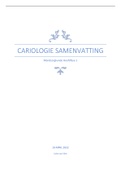Samenvatting
Summary Strategic Management all lecture and reading notes
This is the summarization of all of the study materials of the course. This document presents a summary of the content of the lectures and the required reading chapters for every week of the course. I got an 8.5 for the final exam using this document to study.
[Meer zien]













